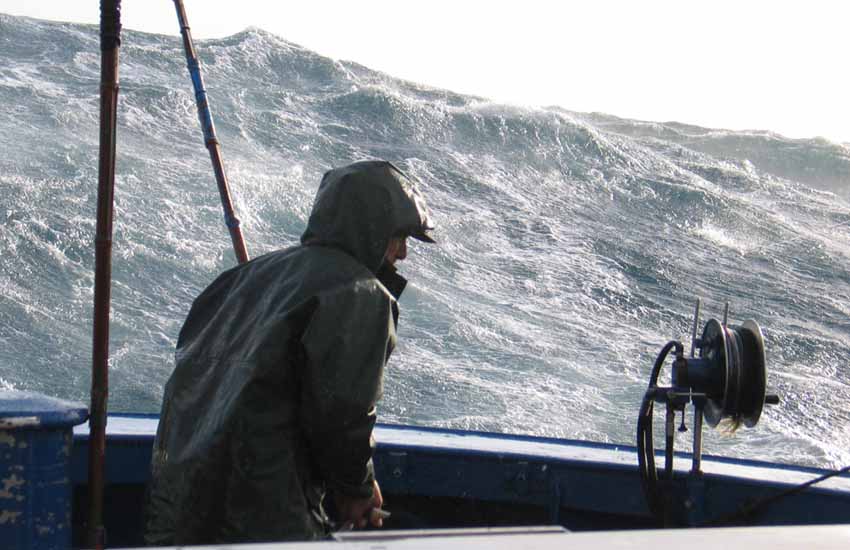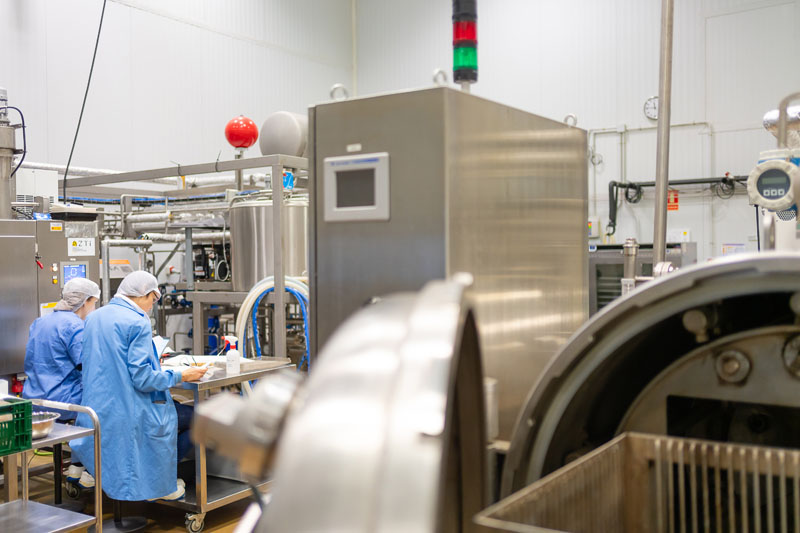Reference energy standard for future fuel-saving measures for OPEGUI’s fleet during the albacore coastal fishing season.
Últimas noticias
Savour and sustainability: insects in gastronomy
Catching fish living at depths of more than 200 meters may have climatic consequences
The future of marine resources and its impact on food security
AINHOA CABALLERO, JOSEBA CASTRESANA and GORKA GABIÑA, Sustainable Fisheries Technologies
Fishing for albacore tuna (Thunnus alalunga) is closely linked to the migration of this species. Thus, the coastal bonito fishery is concentrated between late spring and early autumn, when this species migrates from oceanic areas of the North Atlantic towards the productive waters of the northeast Atlantic, visiting the Azores, the Bay of Biscay and southern Ireland, following a preferential water surface temperature range (Sagarminaga and Arrizabalaga, 2010).
Recently, the tagging of a juvenile individual has allowed the AZTI technology centre to obtain information on its migration during two consecutive years. The data collected indicate that this individual tagged in the southeast of the Bay of Biscay occupied deep waters of the northwest Atlantic during the winter, unlike in the Bay of Biscay, where it occupied shallower waters during the summer.
However, despite this migratory pattern, there is inter-annual variability, so that both at the beginning and during the coastal season there is some uncertainty about the areas that this species will occupy.
Furthermore, as a consequence of climate change, it has been observed that this species has started its trophic migration earlier and earlier: 3 days earlier per decade during the period 1981-2017 (Chust et al., 2019); and 8 days earlier during the period 1967-2005 (Dufour et al., 2010). A tendency to reach more northern areas each year has also been observed (Chust et al., 2019).
As a consequence of these seasonal migration patterns of bonito, trolling and baitboat fleets have to travel hundreds or even thousands of nautical miles to locate schools of this species. Bearing in mind that the cost of fuel can account for 50% of the costs of this activity, in the context of the current energy crisis, it is essential to seek solutions aimed at saving fuel on boats in order to guarantee the sustainability of this activity and reduce its carbon footprint.

Índice de contenidos
Measures to reduce energy consumption on fishing vessels
There are different actions to reduce energy consumption on fishing vessels (Bastardie et al., 2022). These interventions can focus on structural changes to the vessel, changes in propulsion, modifications linked to fishing gear, operational patterns, etc.
In order to propose measures aimed at reducing energy consumption, it is advisable to first have a historical analysis of different parameters related to the fleet’s energy consumption, which will provide a reference framework on which to propose measures and subsequently monitor their effectiveness. This is one of the objectives of the DIPEGUI project, led by the Gipuzkoa Producers’ Organisation (OPEGUI), a non-profit organisation set up by the Gipuzkoa fishermen’s guilds in 1986. This project, financed by the Ministry of Agriculture, Fisheries and Food and the NEXT-GEN funds, within the framework of the Recovery, Transformation and Resilience Plan, contributes to the promotion of an innovative and energy-efficient fishing sector, through technological development and the digitalisation of the inshore fleet.
In this study, AZTI has analysed data from 13 coastal bonito fishing trips from the tuna and baitboat fleet of approximately 40 OPEGUI vessels in Gipuzkoa. The results of this analysis have made it possible to characterise the operational pattern (time-distance-speed during fishing/sailing) that results in different fuel consumption (L fuel/h) and carbon footprint (CO2/tn catch), as well as the intensity of fuel use (FUI, L fuel/tn catch) for each season and fishing gear.
Up to 30% less fuel consumption
Based on the preliminary results of the analysis of the operational and consumption pattern of these vessels, on the one hand, it has been observed that the duration of the bonito fishing trips has decreased from 2009 to date, and that the FUI indices (litre of fuel oil per tonne of catch) of both fleets have decreased in recent years, remaining constant since 2017. For example, in 2021, the baitboat and tuna fleets showed FUI values of 326 L/tn and 605 L/tn, respectively; while in 2015 they showed FUI indices of 684 L/tn and 1419 L/tn.
On the other hand, in the case of the tuna fleet, in recent years there has been a tendency to cover more westerly areas of the Bay of Biscay at the start of the coastal season, with higher FUI indices in the months of May-June compared to the months after the coastal season.
In this aspect, a slight reduction in route speed could lead to a large saving in fuel consumption and a consequent reduction in the carbon footprint of these vessels. Given the similarity to a cubic relationship between ship speed and fuel consumption, it is estimated that a reduction in en-route speed by one knot (in orders of magnitude from a 10 to 9 knot reduction) would lead to a reduction of more than 30% in instantaneous main engine consumption, for both fleets.








